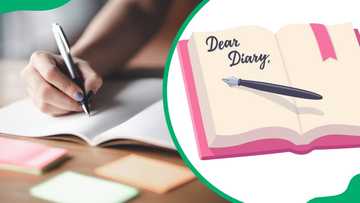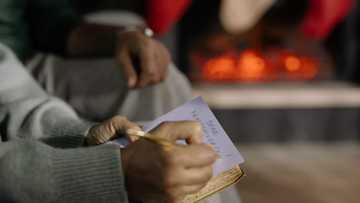How to write a friendly letter: Tips for perfect penmanship
Most people prefer using readily available templates to send friendly letters. Others prefer emails and instant messages to convey their informal messages. Even though these methods make the cut on convenience, using them makes the message generic, lacking the sense of human touch. As such, this exploration of how to write a friendly letter delves into details about the traditional way of conveying a message.
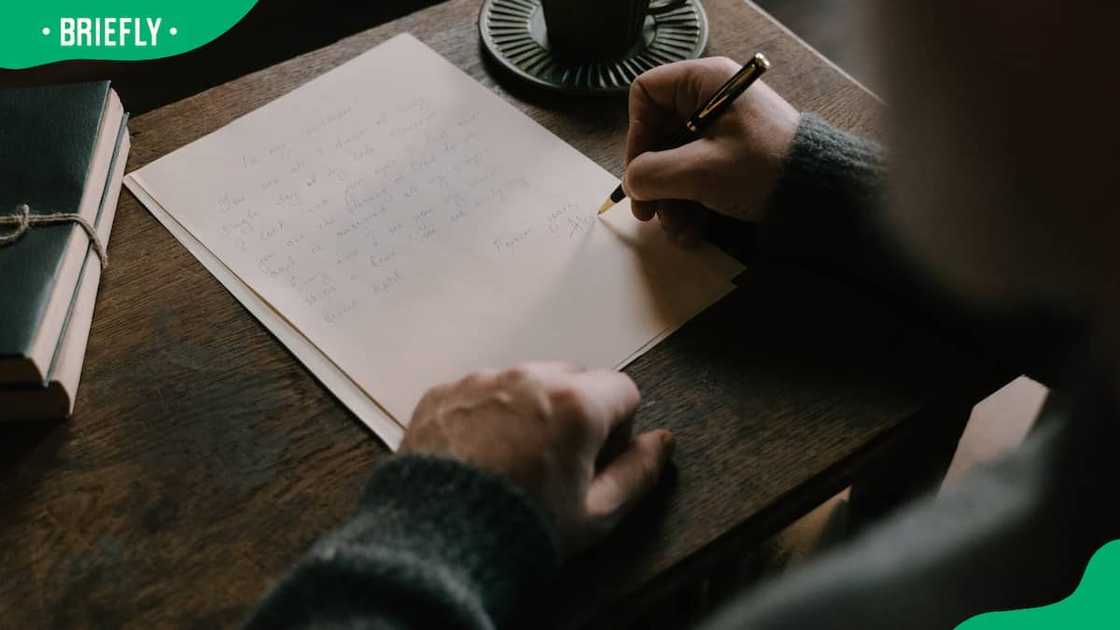
Source: UGC
TABLE OF CONTENTS
- How to write a friendly letter in English
- How do you write a friendly letter to someone you don't know?
- Friendly letter example
- Common mistakes to avoid
- 1. Not using the correct format
- 2. Not introducing yourself
- 3. The improper use of punctuation marks
- 4. Making your letter too long
- 5. Complaining too much
- 6. Improper signing off
- 7. Not proofreading your letter
- 8. Improper divisions for paragraphs
- 9. The lack of clarity
- 10. Not highlighting a call to action
Writing friendly letters makes a message sound more sincere. Your vocabulary, tone and flow of ideas give your message an identity. It also expresses how much effort you put into the process.
How to write a friendly letter in English
A letter to a friend is an example of an informal letter; its content is often light and maintains a friendly tone. As such, most people assume there are no rules to be followed when writing a friendly letter. However, a set of roles dictates the format of a friendly in South Africa.
What are the 5 things in a friendly letter? A friendly letter comprises these main sections:
- The heading
- The salutations section
- The body
- The closing section
- The signature
1. The heading
The first part of the friendly letter is the heading. It contains your address and the date of the letter's writing.
With the date, the recipient will better understand when you wrote the letter since some people save this information as mementoes. You can write the date in full or as an abbreviation. The heading also includes the writer's address. This is the same address the recipient will use to when responding.
The heading is situated in the upper right-hand corner. Using the tab key, indent 3 inches for each line. Skip one line between the address and the date.
2. Salutation
How do you start a friendly greeting letter? The salutation section, or the greetings section, is the second part of the letter, located two lines below the heading and aligned to the left. Start by capitalising the first word of the salutation, for instance, Dear friend. You should also include a comma after the salutation.

Source: UGC
3. The body
After the salutation, skip two lines and begin the first body paragraph, where you should convey your message using complete sentences. Correct grammar, punctuation marks and tenses are paramount in this section since they make your letter easy to read and comprehend. Follow these tips to communicate your message effectively:
- Only include relevant information
- Align the paragraphs to the left
- Do not skip any spaces between the paragraphs
The first paragraph
Start the first paragraph by exchanging pleasantries to give a warm feel. This lighthearted feeling sets the tone for the rest of the letter. It also gives the recipient an idea of your mood.
The second paragraph
As you ease into the second paragraph, comfortably get into the main content of why you wrote to them. Be articulate, and let the recipient know something about your life, especially if it is something they will appreciate and cement your relationship and closeness
Catch them up on the events of your life and your plans for the future. The depth of the details will depend on how comfortable you are and the nature of your friendship. Include questions to express your interest in their response.
Discuss the topics that both of you find relevant or enjoy talking about. Suggest book titles, movies or TV shows you think they might enjoy.
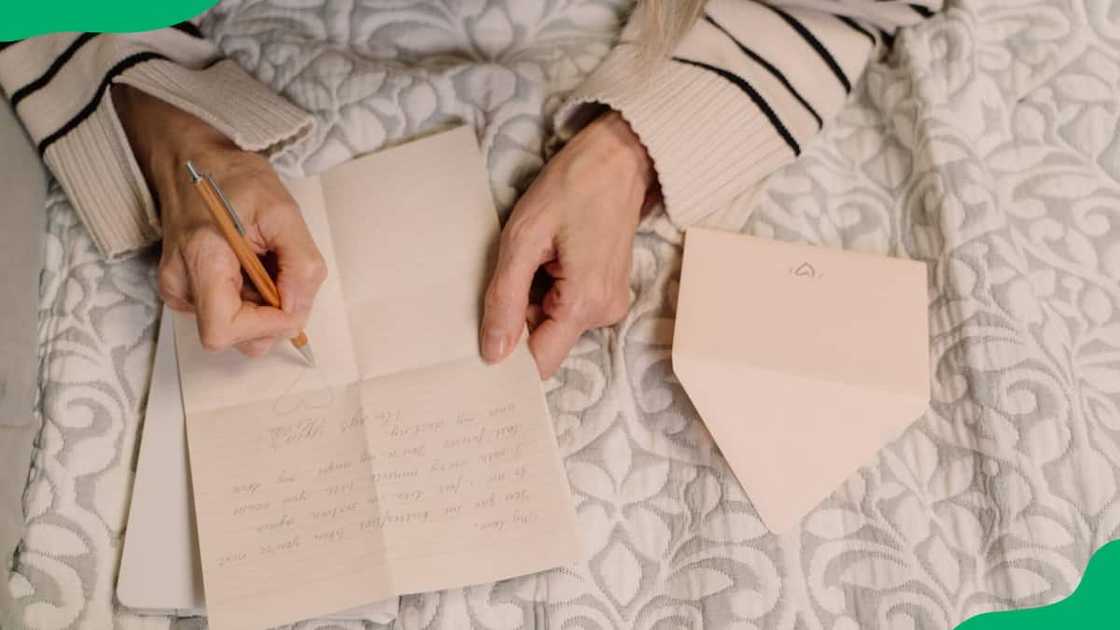
Source: UGC
4. The closing section
After conveying the message on the main message, it is time to wrap up the letter. The friendly letter's ending should contain words of the best wishes. The tone of the conclusion should also evoke positive feelings and encourage the recipient to write back to you.
5. The signature
The final part of tips on how to end a friendly letter is signing off. After the conclusion, sign off the letter with your nickname or whole name.
Even though it is not formal, you can to include a postscript. The postscript highlights additional information that might be irrelevant in the letter's body, for instance, an inside joke or a note.
How do you write a friendly letter to someone you don't know?
The tips on how to write a friendly letter to a friend or a stranger are not any different. However, writing to a stranger means your tone might be slightly different. Take these additional tips into account when writing a friendly letter:
- Explaining your intent for writing to them
- Starting the letter off with a short note or postcard is just as appreciated as a letter
- Keeping your opening greeting simple
- Using a simple opening line in the introduction of the friendly letter
- Including witty anecdotes in the friendly letter's topics
Friendly letter example
Here is a template of a friendly letter example for students. It indicates the outline and format of the letter.
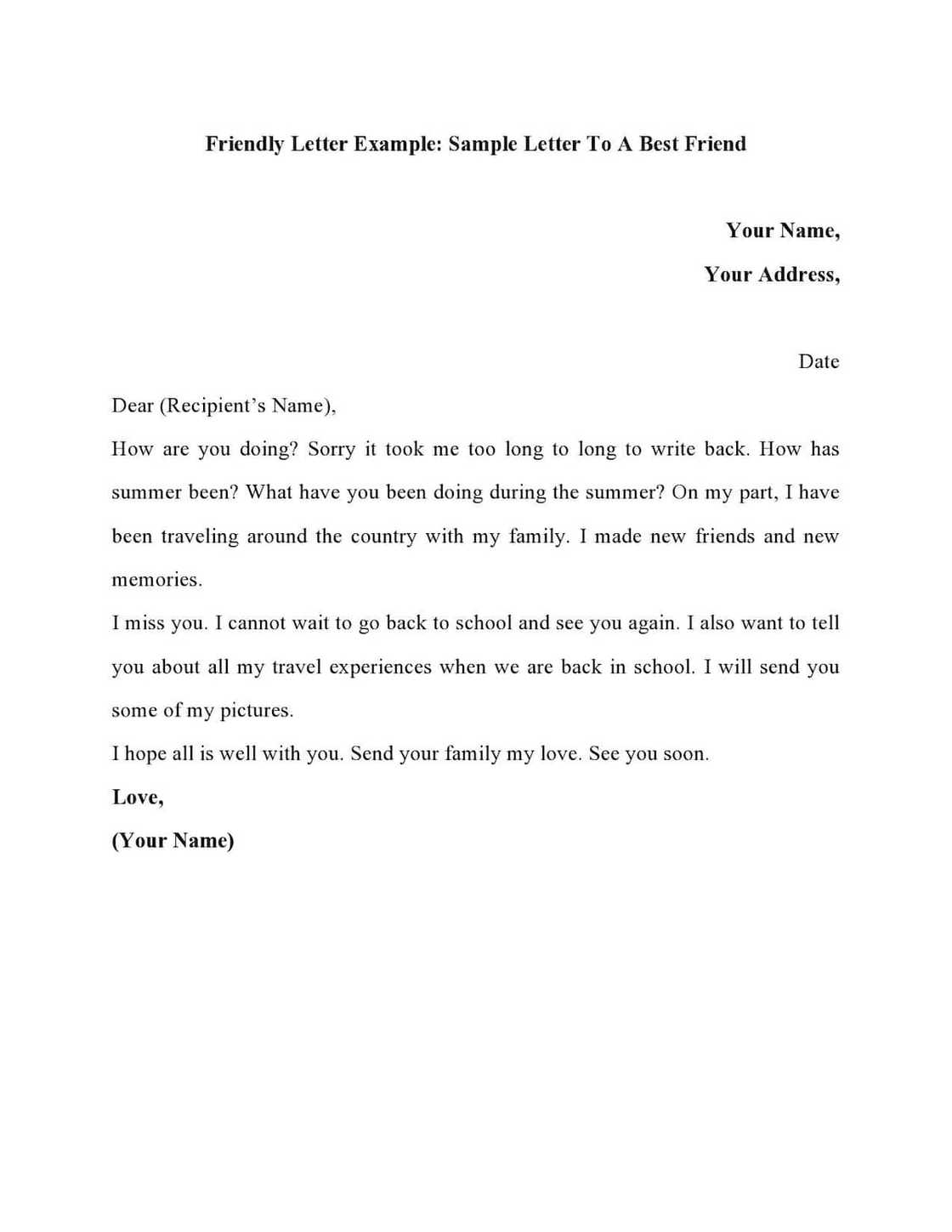
Source: UGC
Common mistakes to avoid
Even though friendly letters do not have strict rules apart from the letter's format, you still want to do it correctly. Besides the how to write a friendly letter example pictured above, these are some of the most common mistakes to avoid:
1. Not using the correct format
As highlighted above, a friendly letter has a stipulated format. Sticking to the format ensures the proper conveyance of the intended message.
2. Not introducing yourself
Failing to introduce yourself is wrong, especially if the recipient is someone you have not spoken to. You might remember their name, but they might not recognise you. An important tip, especially if you are wondering how to start a friendly letter to a stranger, is to describe yourself briefly by including details on how you met.
3. The improper use of punctuation marks
The wrong use of punctuation marks can distort the intended meaning of the message, for instance, a wrongly placed apostrophe or comma. Remember, the recipient might not be a writing expert; they might point out these mistakes.
4. Making your letter too long
Even though friendly letters are not limited to a specific length, making your letter shorter might benefit your delivery of the message. The shorter your letter is, the easier it is to comprehend your message.
5. Complaining too much
Even though the tone of a friendly letter is casual and open, avoid going on a tangent and dwelling on your problems. Lightly touch on the issues bugging you, but remember not to make them the central message of the letter.
6. Improper signing off
Even though a friendly letter is not an example of a formal letter, it is paramount to follow the proper etiquette when writing it. An example is failing to include a closing phrase and signing off at the end. Signing off is paramount, especially when writing to someone who does not remember or recognise you, and since this is the section where you provide your name, they will need it when writing back to you.
7. Not proofreading your letter
Proofread your letter at least thrice before sending it. Cross-checking your writing helps highlight the mistakes you missed out on. It also ensures you effectively communicate your message.
8. Improper divisions for paragraphs
It is essential to consider its readability when writing your letter. The coherence of your thoughts and ideas affects the ease of understanding your intended message.
9. The lack of clarity
When writing a friendly letter, you must have a clearly established message you wish to put across. The lack of clarity will likely thrust you into writing irrelevant or confusing information, especially if you are writing to a stranger.
10. Not highlighting a call to action
Not including how you expect the reader to respond deters you from meeting your letter's goal. A clear call to action makes it convenient for the recipient to establish what their response will entail.
These tips on how to write a friendly letter go into detail on the letter-writing process. From highlighting its structure and what you should write in the sections to pointing out the common mistakes you should avoid, these details guarantee to make the letter-writing process easier.
READ ALSO: How to get a letter of good standing: a step-by-step guide
Similarly, Briefly published a step-by-step guide on how to get a letter of good standing. Even though there are several letters of good standing, this article focuses on how to get the COIDA and tax clearance letters of good standing.
A COIDA letter confirms your company is recognised and registered with the South African Workman's Compensation Fund. It is also proof that the company's contributions are up-to-date. Meanwhile, a tax clearance letter of goods proves that the employer or the company does not have any outstanding tax returns with the South African Revenue Services.
Source: Briefly News


